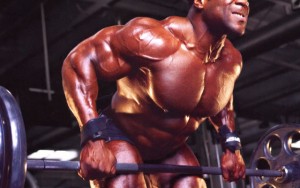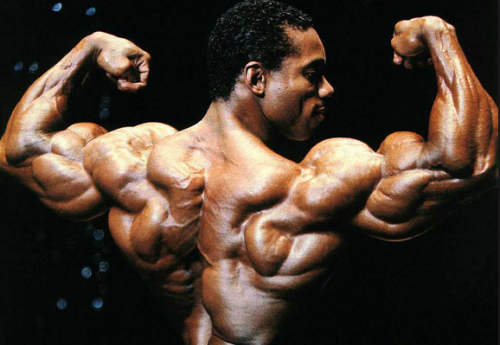By Jesse Burdick
“THE 10 BEST EXERCISES YOU’RE NOT DOING!”
Fitness magazines publish this bullshit piece all the time—accompanied by a similar cover-line to get your attention while you’re walking through the airport—and I always take issue with it, because the people writing the pieces generally have no idea what they’re talking about (“OMG, bro…I just saw some guy hitting a tire with one of those big-ass John Henry hammers!”). I mean, seriously, when I see this shit, I always want to ask them the same question:
“Dude, how the fuck do you know what exercises I’m not doing?”
A better title for most of this crap would be:
“THE 10 BEST EXERCISES JUST DISCOVERED ON YOUTUBE BY GUYS WHO DON’T LIFT WEIGHTS!”
With that said, what I’m about to say next is probably a little bit hypocritical, but I don’t care. I’m here to tell you How To Be Awesome, so in addition to the rest of this series, I’m going to give you the real list of seriously useful exercises you’re really not doing—and not a list that’s just been concocted by some dude who only figured out what a Romanian deadlift was last Wednesday.
Today, we’ll get you started with a highly underrated monster: The Pendlay row.
WTF?
The Pendlay row is a kind of bent row done from a dead stop position—i.e., from the floor—that’s been popularized by Olympic lifting coach Glenn Pendlay (along with legendary powerlifters Ed Coan and Mark Philippi). The main idea here is to strengthen the bottom position of just about every lift—from snatches to cleans, to deadlifts and squats. They’ll activate and strengthen your back, improve your starting strength, and teach you how to stay tight.
Suffice it to say that some brutally strong people have used this exercise to death over the years, and you should be doing the same. I’ll get into technique in a minute, but the basic concept is to engage in a very strict pull, followed by resting the weight on the floor. You’re essentially going to (almost) let the bar go, retighten your grip, then go again. You won’t be getting as much time under tension as you would with a conventional barbell row, so you’ll be able to use significantly more weight with Pendlay rows than you otherwise would.
Stance and Setup
 As with most exercises, not everyone will require the same stance with these. A good starting point is to set your feet in your normal deadlift stance—or just a shade wider. The bar should be over the middle of your feet, or a little bit further out in front of you if you have any flexibility issues. This isn’t a deadlift, and you don’t want the bar up against your shins. You’re bending over, and you’re staying bent, a position that necessitates setting up with the bar further forward in your stance.
As with most exercises, not everyone will require the same stance with these. A good starting point is to set your feet in your normal deadlift stance—or just a shade wider. The bar should be over the middle of your feet, or a little bit further out in front of you if you have any flexibility issues. This isn’t a deadlift, and you don’t want the bar up against your shins. You’re bending over, and you’re staying bent, a position that necessitates setting up with the bar further forward in your stance.
Once your feet are set, sit your ass back, bend your knees, and reach down and grab the bar with an overhand grip in a position just outside the width of your knees. You want your grip to be natural and comfortable here. This isn’t a snatch-grip row, and it’s not a sumo high pull. You’re simulating a conventional deadlift, so grip the bar that way. You can use an underhand grip, but you won’t be able to go as heavy—which kind of defeats the purpose of the exercise.
Your Back
At this point, once you’re in position and ready to pull, we need to address the concept of an “arched back.” When you read exercise instruction in most magazines and online, they’re constantly telling you to keep your back “arched” throughout every exercise in order to maintain correct form. This, however, is very misleading.
The concept of arching your back comes from powerlifting, and you have to be mindful of the body types you’re dealing with there. When you’re telling a 300 pound behemoth to arch his back, what you’re really suggesting is that he simply keep his back straight, with a neutral spine. With most guys that size, there’s no way in hell you’re going to see any appreciable arch in their backs—primarily because of the size and thickness of their spinal erectors.
Conversely, when you’re dealing with someone more flexible—a hard-gainer, or someone who’s been doing yoga—it makes no sense to tell them to arch, because they’re already able to make their shoulder blades touch their ass. This is a very bad muscle pattern, and it’s not something you want to encourage. The idea, then, is to tighten your lower back, to keep a neutral spine, and to have your head either directed at the floor, or at a slight upward angle. You don’t want to hold your chin up in the air here.
Execution
Once everything is nice and tight, your back is flat and neutral, and your lats are good to go, pull the bar to your xiphoid process, or lower part of your sternum. When you pull, you want your elbows close to your body. They don’t have to be rubbing against your sides on the way up, but you also don’t want them winging out away from the bar.
Visualize gripping the bar and using your elbows to throw it back, as though you’re trying to elbow someone behind you. The barbell row can turn into more of a grip exercise, where you’re desperately trying to hang on until you reach your belly button. Feel your way through your Pendlay rows by leading with your elbows instead.
 When you’re working with heavy weight, the temptation will be to cheat, by using your legs and lower back and trying to stand up. Pendlay rows should be brutally hard, and you want to struggle with those last three inches of your range of motion, instead of turning this into a lower back extension move.
When you’re working with heavy weight, the temptation will be to cheat, by using your legs and lower back and trying to stand up. Pendlay rows should be brutally hard, and you want to struggle with those last three inches of your range of motion, instead of turning this into a lower back extension move.
In order to get the most out of those last three inches—the part where you’re going to want to cheat—try to force your shoulder blades together, and really squeeze your lats. Most people, when they’re doing any type of back exercise, never really flex their lats. Instead, the mistake everyone makes is to shove their belly down, shove their chest up, and straighten their legs. Stay in position and don’t do this.
Putting Them in Your Program
Pendlay rows are not a high-rep exercise, and it’s best to keep your rep ranges between 5-10 for each set. If you’re working up as high as ten reps, that’s when you’re going to be doing multiple sets with lighter weight. A better idea would be do try these 5×5 style. That way, you’ll move some heavy weight and take full advantage of the way this highly effective move can build your strength from the bottom position of your power exercises.








Recent Comments